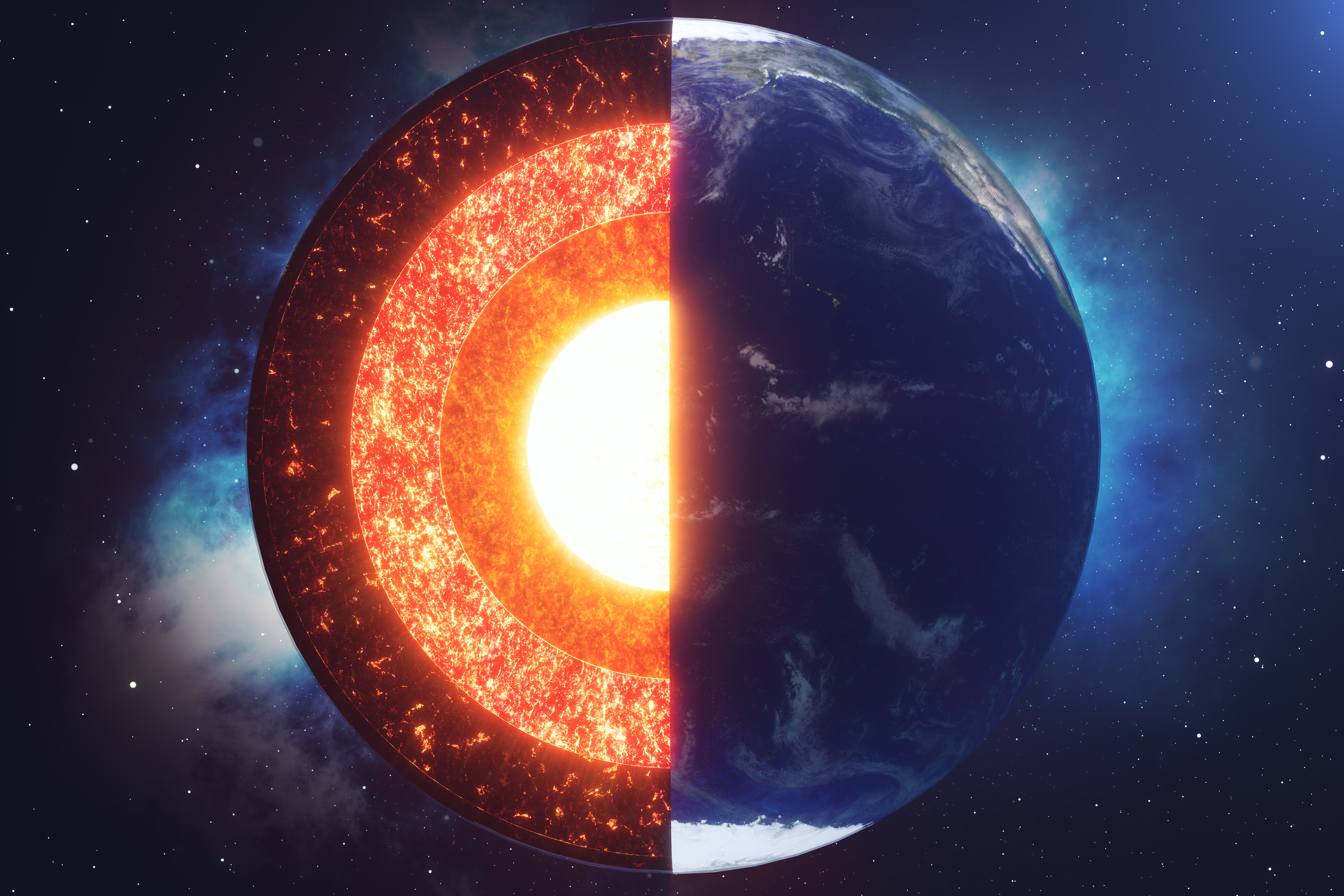Earth's Inner Core May Have Changed How It Spins, New Study Claims
A new study published in Nature Geoscience claims that the Earth's inner core may have changed how it spins. The inner core, which is believed to be made mostly of iron, is surrounded by a liquid shell of iron and other elements. For decades, scientists believe this liquid core has allowed the more solid inner core to spin separately from the Earth's mantle. Now, though, that spin appears to have changed.
To fully understand the changes, let's jump back to 1936 when researchers first discovered the Earth's inner core. The researchers were studying how seismic waves from earthquakes traveled through the planet at the time. The changes in the speed of those waves helped them determine that Earth had a solid inner core surrounded by liquid. Additional studies of the core have even helped us date it.
From there, researchers in 1996 discovered that the travel time of seismic waves had changed since the 1960s, indicating that the Earth's inner core rotates faster than the rest of our planet. Later studies refined the estimates of the difference between the inner core and the mantle's spin rates, concluding that the inner core rotates one-tenth of a degree faster than the mantle each year.

Scientists refer to this faster rotation as a "super-rotation." However, not all scientists agree that it exists. Some believe that the changes we see in the travel times of seismic waves have more to do with the overall physical changes to the surface of Earth's inner core, which always changes as the liquid crystallizes along its surface.
Other studies have also claimed that the core can experience a "subrotation," meaning that the innermost core spins slower than the mantle of the Earth. One study published in June of 2022 looked at the seismic waves from US nuclear tests in 1969 and 1971. They saw that between those years, Earth's inner core had rotated more slowly than the mantle, with it speeding up again in 1971.
Even more intriguing, though, is that this new study claims that the Earth's inner core has halted its spin relative to the mantle. To discover this, the researchers look at earthquakes between 1995 and 2021. They found that in 2009, the inner core's super-rotation appeared to have ceased and hasn't started up again. Further, we've even found hot, dense structures near the core, too.
The data, then, could hint that the inner core is in the process of shifting back to a subrotation, the researchers say. However, many questions remain about how the Earth's inner core rotates and how those rotations change over time. But not all scientists believe in these rotations. If we want to prove it and get a better understanding, researchers say a long history of continuous seismic data recording is needed.
